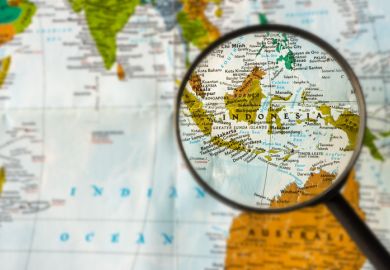Canberra’s crackdown on international students risks jeopardising universities’ offshore operations and undermining a policy drive to educate more foreigners on their home soil.
Australian universities expect to lose hundreds of millions of dollars because of recent government moves to delay visa processing, reject more visa applications and massively increase visa fees. This could deprive institutions of the resources they need to establish and sustain overseas ventures.
And the government’s proposal to cap onshore enrolments could undermine the business model of overseas programmes, which often include stints within Australia.
Australia’s turn against international students coincides with similar moves in Canada and the UK, plus a possible Donald Trump presidency in the US, which could prompt students who might traditionally have gone to a major anglophone nation to consider alternative options, with Asian branch campuses a leading contender.
Monash University, arguably Australia’s most international institution, said overseas operations required cross-subsidisation in their formative years. It said universities’ capacity to finance this activity was being endangered by government policy changes.
Central Queensland University (CQU), which hopes to follow Monash’s lead in establishing a stand-alone branch campus in Indonesia, said the cap proposal could put all Australian institutions’ transnational education activities at risk.
Consultant Claire Field said Deakin and Wollongong universities were wisely “starting small” with their branch campuses in India, targeting low-scale recruitment for a few postgraduate courses.
“Both universities took these decisions to set up branch campuses in India a long time before the current raft of government changes,” she said. “How much more challenging will [it] be for other Australian universities to…invest in [transnational education] activities and particularly branch campuses when they are now going to be dealing with significant declines in their onshore revenues?”
Jason Clare, the education minister, has insisted that international education should not be a “one-way street”. “It is not just about international students coming to Australia. It is increasingly about Australian universities going to the world,” he said when Deakin and Wollongong announced their plans for campuses in Gujarat.
But Chris Ziguras, director of the Centre for the Study of Higher Education at the University of Melbourne, said it was “disingenuous” for a government to portray transnational education (TNE) as “some sort of consolation” for reduced opportunities back home. “Losing student enrolments onshore and replacing them with student enrolments offshore is not a one-for-one trade,” he said.
Professor Ziguras said overseas campuses required significant investment and were generally pursued by mid-tier universities, which “had to try harder” to attract foreign students, and which had suffered the brunt of the recent visa restrictions. “Institutions that have seen their numbers of students drop significantly won’t have discretionary funds to invest offshore,” he warned.
Higher education consultant Justin Bokor said few offshore activities reached surplus in the first few years of operations, but “it depends on the model”. Last year’s institutional accounts show that Monash experienced losses of A$5.5 million (£2.9 million) from its Indonesian campus, established in 2021, and A$4.1 million from its 12-year-old partnership with China’s Southeast University. But its 25-year-old Malaysian campus notched up a A$25.5 million surplus.
Professor Ziguras said soaring visa rejections could undermine longstanding offshore operations such as Monash University Malaysia and RMIT Vietnam.
“Part of the appeal of…those branch campuses is you can do part of your studies in Melbourne through exchange. It’s far less expensive than doing a degree in Australia, and you still get some onshore experience. If those visas are being restricted, that’s a real problem. And if those students have to pay a A$1,600 fee to do a semester in Australia, for someone in Vietnam or Malaysia, that’s quite big money.”
POSTSCRIPT:
Print headline: Home and away, visa squeeze bites
Register to continue
Why register?
- Registration is free and only takes a moment
- Once registered, you can read 3 articles a month
- Sign up for our newsletter
Subscribe
Or subscribe for unlimited access to:
- Unlimited access to news, views, insights & reviews
- Digital editions
- Digital access to THE’s university and college rankings analysis
Already registered or a current subscriber?










